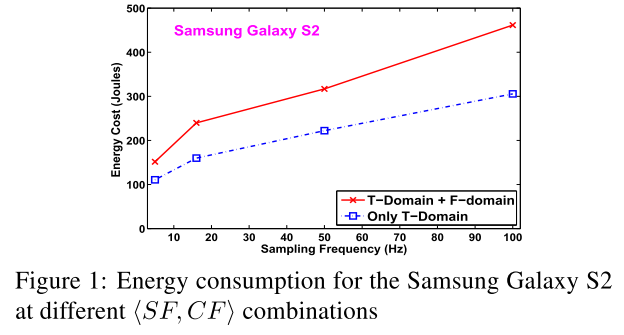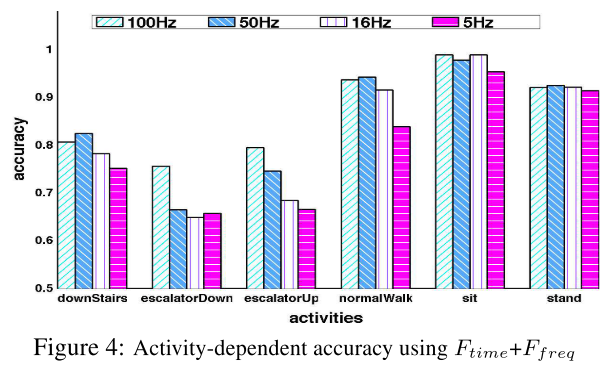Related Works of HAR (Human Activity Recognition) and Transportation Mode
“Transportation/Mobiliy Mode” and “Activity Recognition” are two very related topics, since many studies consider “Walk/Run” as activities.
In this survey, I mainly focus on courier-related activities/mobilities (e.g. walk/riding) while ignoring other activities/mobilities (e.g. car/bus/keystroke).
Keyword
-
Activity Recognition
-
Transportation/Mobiliy Mode
Taxonomy
- Data Source: CDR, IMU, Acc.
- Sampling Rate: 100Hz, 5/16/50/100Hz, 10Hz,
- Methods: ML, HMM,
Comments
- Sampling Rate is one of the key barriers when applying the methods
Papers
- ISWC12: Energy Efficiency
- Acc., 5/16/50/100Hz, ML
- Trade-off between sampling frequence and classification performance.


- SenSys13: Accelerator
- Taxonomy: Accelerator, 100Hz, ML+HMM,
- SenSys15: Device Heterogeneities
- In-depth study of device heterogeneities on activity recognition.
- TBD17: Activity-based
- Taxonomy: CDR,
- MobiCom18: Closting Gap
- Taxonomy: IMU, 10Hz,
Ref.
[ISWC12] Yan, Z., Subbaraju, V., Chakraborty, D., Misra, A., & Aberer, K. (2012, June). Energy-efficient continuous activity recognition on mobile phones: An activity-adaptive approach. In ISWC (pp. 17-24). Ieee.
[SenSys13] Hemminki, S., Nurmi, P., & Tarkoma, S. (2013, November). Accelerometer-based transportation mode detection on smartphones. In ACM SenSys (pp. 1-14).
[SenSys15] Stisen, A., Blunck, H., Bhattacharya, S., Prentow, T. S., Kjærgaard, M. B., Dey, A., … & Jensen, M. M. (2015, November). Smart devices are different: Assessing and mitigatingmobile sensing heterogeneities for activity recognition. In ACM SenSys (pp. 127-140).
[TBD17] Jiang, S., Ferreira, J., & Gonzalez, M. C. (2017). Activity-based human mobility patterns inferred from mobile phone data: A case study of Singapore. IEEE Transactions on Big Data, 3(2), 208-219.
[MobiCom18] Shen, S., Gowda, M., & Roy Choudhury, R. (2018, October). Closing the gaps in inertial motion tracking. In ACM MobiCom (pp. 429-444).
